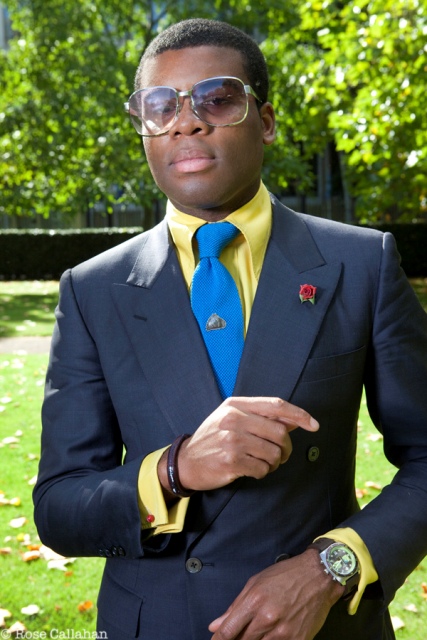So Research Turtles decided to send me their album gratis. And when it finally surmounted its rivals on my To-Do List, I settled down to take in some studiously hewn, power pop-infused rock by four young fellows from Lake Charles, Louisiana, who could not be more pleased to be calling their own tune. Moreover, they also happen to be dab hands at playing it - this, along with the following they are conscientiously amassing on the stage and through the interweb, should make a sizeable bargaining chip for any future recording contract
In the meantime, the band has a craft to hone
Jud and Joe Norman, the mop top brothers, share vocals and commandeer the bass and guitar, respectively, in a well oiled machine that is also formed from the excellently named Logan Fontenot, lead guitarist, and Blake Thibodeaux on drums and percussion, with Wes Anderson's Bill Murray-led The Life Aquatic inspiring the group's sobriquet and detailed, intuitive and heavy production from Justin Tocket. With such telegenic qualities, the four-piece have covered much ground in their bid to live up to their self-assumed mantle of "America's Newest Hit Makers," although I might suggest developing an addiction or five in order to efficiently generate the salacious tabloid material that would come with the territory
Five-star status is normally greatly difficult to effectuate with a debut record, and in the interests of disclosure, Research Turtles The Album is no different - it holds much promise and delivers on it across the vast majority of the songs, but now and again, one hears the sound of a band starting to coalesce into a combo of worth rather than arriving at that place already. This is normally the result of Jud Nelson's songwriting rather than any flaws in the group's performances; 'The Riff Song,' for example, is realised in an endearing fashion of confident musicianship - and also strongly resembles Rage Against The Machine's indelible 'Killing in the Name' - but ironically, the songwriting is somewhat subordinated to the Riff itself when they could, and should, work as an equal partnership. 'Break My Fall,' the only other song I felt to be lacking enough for nitpicking, also sounds a touch sluggish in spite of its on-paper successes of decent riffing and relatively uncomplicated songcraft, which seems to be down to the unattractive vocal delivery and a main hook that is a little too languid to be greatly compelling - the lively jamming that occurs within two minutes literally resuscitates the song into a form of enthusiastic life
Nevertheless, I really like what the four are capable of, thus far. By working within the tried and true framework of classic rock, and threading together influences from the fields of New Wave, psychedelia, AM pop, surf harmonies and touches of British melody (that which I usually like to refer to as "Kinksian"), the formula they offer is bright, immediate, mostly upbeat and unabashedly built for lingering when the record has long ceased playing. It's also, as the band allude to themselves, staunchly American - deceptively simple, rooted in rock history, attuned to hooks in their purest form, and polished to a self-assured, radio friendly sheen
The bands the album evoked in my mind vary from the obvious to the recondite to the slightly unfashionable, and whilst the likes of The Knack, middle-period rock Cornelius (himself a grab bag of classic rock inflections done his own way), Led Zeppelin and Black Sabbath's riff mastery, The Sweet, Shonen Knife and The Ramones are easy associations, I was surprised to find a contemplative moment such as 'Kiss Her Goodbye' to be somewhat redolent of Ben Folds Five, a band, I should state, that I have always categorised as a genuine pleasure; never a guilty one. Truthfully, one can link a number of the Research Turtles' songs to those of older bands; the one I found most unexpected was 'Into A Hole's sonic link to Weezer's 'Susanne,' though the notion that the two bands share anything in common is easily confirmed somewhere between the start of the subtly enticing, groovy opener 'Let's Get Carried Away' and the midway point of spirited, future teen movie soundtrack classic in its own right, 'Mission'
I particularly appreciate the foursome's refusal to maintain straight-ahead structures, as heard in highlights like the ska-kissed 'Tomorrow's Beatle-esque bridge and the micro rave-ups and gliding codas seeded within otherwise traditional power pop and radio-ready rock numbers like 'A Feeling' and the aforementioned 'Break My Fall.' Such jams go quite a ways to cementing Research Turtles' instrumental credibility. But never let it be said that these young men do not know how to enjoy themselves - my other favourites include their abandoned, amiably rocking party starters, 'Damn,' '925' and 'Cement Floor,' where the group's upbeat rock'n'roll tendencies are in perfect sync with their vigorous playing, simple singing and unfussy delivery
I've never met them, but if fortune favours them, they might have the brightest futures of anyone else I've encountered this year. Good luck to them all
--------
Research Turtles can be downloaded at no charge here. Their MySpace fiefdom is also present and correct
--------
Research Turtles can be downloaded at no charge here. Their MySpace fiefdom is also present and correct



,_La_Marchesa_Luisa_Casati_%281881-1957%29_con_un_levriero.jpg)














































